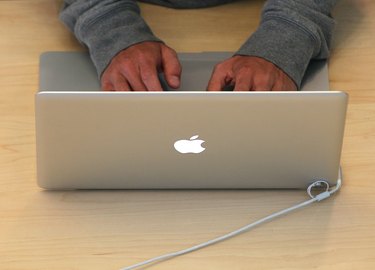
The Extensible Firmware Interface is an alternative to the traditional Basic Input/Output System. Like the BIOS, the EFI has its own interface or "shell" that allows you to change hardware settings. Apple does not include this shell in its Macintosh computers. Despite misconceptions about different types of Mac firmware, there is no way to access the EFI directly. However, you can still alter some of the settings traditionally associated with BIOS and EFI controls.
Background
Video of the Day
All new MacBooks run on Intel processors, and include the Intel-developed EFI firmware. Older Macs use IBM's Power PC processors which run an older program known as Open Firmware. Open Firmware is similar to the BIOS found on non-Apple computers in that it provides access to hardware settings. Attempts to hack EFI in order to gain this same type of access can result in permanently disabling your computer's ability to boot.
Video of the Day
Hard Drive Settings
When you start up your MacBook, it boots from the operating system on the hard drive by default. Conventional BIOS and non-Apple EFI implementations allow you to change this using the firmware's shell. They also allow you to partition your drive into different sections to improve data security and organization. While Intel-based Macs don't have a shell, they still allow you to specify the system that starts up your computer. You can find this option in the Startup Disk section of the System Preferences. You can find the partitioning options in the Disk Utility located in the Utilities folder.
Startup Commands
MacBooks that use EFI provide a series of firmware commands that you can initiate at startup. To use these, you must press and hold specific keys when the Apple logo appears at startup. Commands include an Apple Hardware Test and a Safe Boot mode. To run the AHT, make sure your computer has access to Wi-Fi or another Internet connection and hold down "D" at start up. This presents an interface that reports on the status of hardware devices. To start up in Safe Boot mode, hold down the Shift key at startup. This allows you to boot even if you have software malfunctions that prevent a normal boot.
Misconceptions
Confusion about the difference between EFI and its Open Firmware predecessor has led to a misconception that all Macs provide access to a firmware shell. You can determine if your Mac runs Open Firmware or EFI by going to the Apple icon in the upper left-hand corner of your screen and selecting "About this Mac." A window appears displaying your processor type. If you have a Power PC processor, you don't have the EFI interface, but you can access the Open Firmware shell by holding down Command, or Apple, and Option at the startup screen.